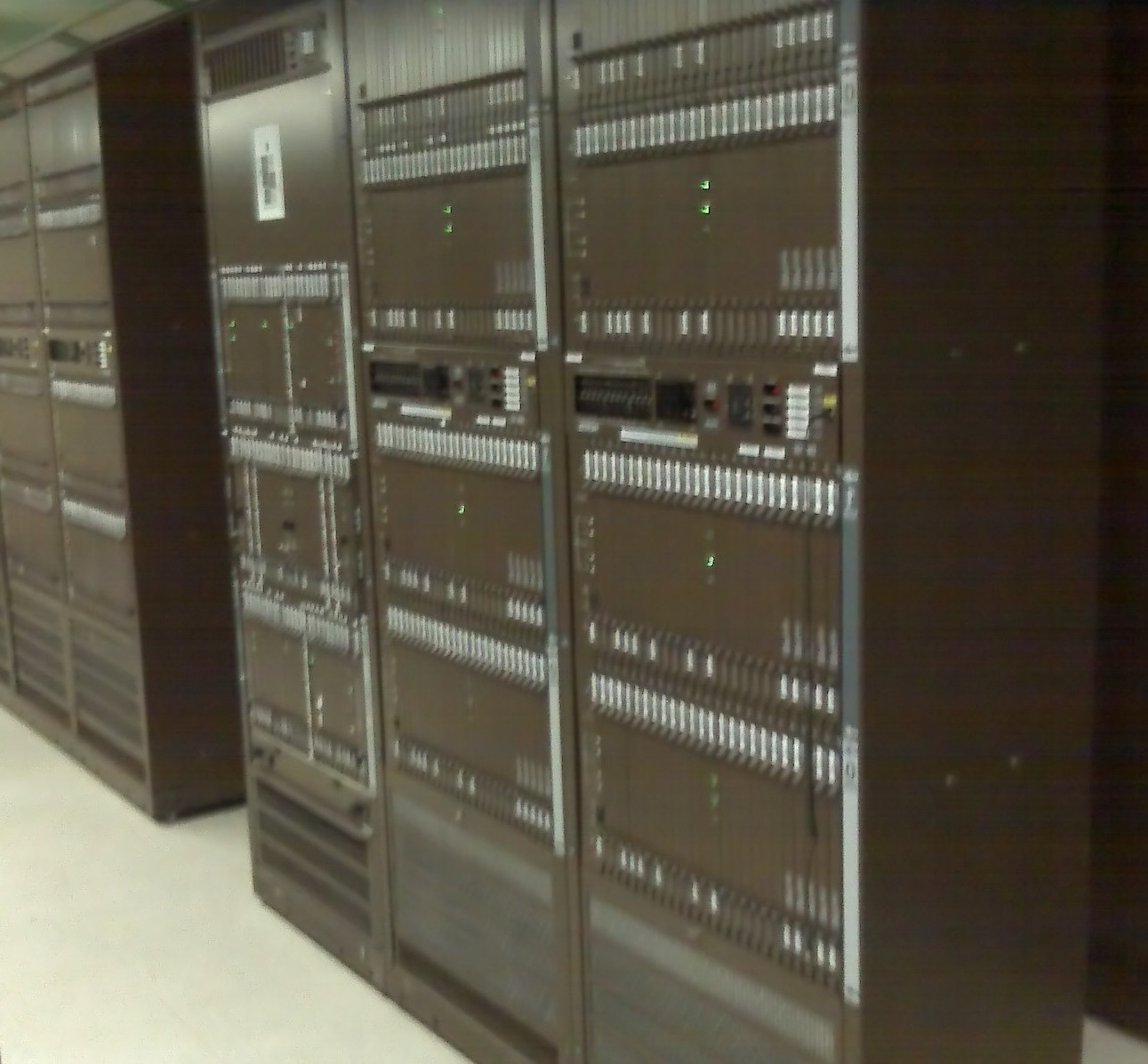|
Class 4 Telephone Switch
A class-4, or tandem, telephone switch is a U.S. telephone company central office telephone exchange used to interconnect local exchange carrier offices for long distance communications in the public switched telephone network. A class-4 switch does not connect directly to telephones; instead, it connects to other class-4 switches and to class-5 telephone switches. The telephones of service subscribers are wired to class-5 switches. When a call is placed to a telephone that is not on the same class-5 switch as the originating subscriber, the call may be routed through one or more class-4 switches to reach its destination. Etymology ''Tandem'' derives from the Latin adverb ''tandem'' meaning ''at length'', and is used in English to mean a group of two people or machines working together, usually in series. A tandem switch is used to interconnect other switches via trunks. Thus, tandem switches are always part of a series of switches and lines that connect telephone callers to ... [...More Info...] [...Related Items...] OR: [Wikipedia] [Google] [Baidu] |
Telephone Company
A telephone company, also known as a telco, telephone service provider, or telecommunications operator, is a kind of communications service provider (CSP), more precisely a telecommunications service provider (TSP), that provides telecommunications services such as telephony and data communications access. Many telephone companies were at one time government agencies or privately owned but state-regulated monopolies. The government agencies are often referred to, primarily in Europe, as PTTs (postal, telegraph and telephone services). Telephone companies are common carriers, and in the United States are also called local exchange carriers. With the advent of mobile telephony, telephone companies now include wireless carriers, or mobile network operators. Most telephone companies now also function as internet service providers (ISPs), and the distinction between a telephone company and an ISP may disappear completely over time, as the current trend for supplier convergence in ... [...More Info...] [...Related Items...] OR: [Wikipedia] [Google] [Baidu] |
Digital Multiplex System
Digital Multiplex System (DMS) is the name shared among several different telephony product lines from Nortel Networks for wireline and wireless operators. Among them are the DMS-1 (originally named the DMS-256) Rural/Urban digital loop carrier, the DMS-10 telephone switch, the DMS SuperNode family of telephone switches (DMS-100, DMS-200, DMS-250, DMS-300, DMS-500, DMS-GSP, DMS-MSC, DMS-MTX), and the S/DMS optical transmission system. Exploratory development on the technology began at Northern Telecom's Bell Northern Research Labs in Ottawa, Ontario in 1971. The first Class 5 switch, the DMS-10, began service on 21 October 1977 in Fort White, Florida and the first toll switch (Class 4), the DMS-200, entered service in 1979 in Ottawa. The DMS-10 was the first commercially successful Class 5 digital switch in the North American market and had a profound impact on the industry. Of the numerous digital switching products introduced in the North American telephone market in the la ... [...More Info...] [...Related Items...] OR: [Wikipedia] [Google] [Baidu] |
DMS-100
The DMS-100 is a member of the Digital Multiplex System (DMS) product line of telephone exchange switches manufactured by Northern Telecom. Designed during the 1970s and released in 1979, it can control 100,000 telephone lines. The purpose of the DMS-100 Switch is to provide local service and connections to the PSTN public telephone network. It is designed to deliver services over subscribers' telephone lines and trunks. It provides plain old telephone service (POTS), mobility management for cellular phone systems, sophisticated business services such as automatic call distribution (ACD), Integrated Services Digital Network (ISDN), and Meridian Digital Centrex (MDC), formerly called Integrated Business Network (IBN). It also provides Intelligent Network functions (AIN, CS1-R, ETSI INAP). It is used in countries throughout the world. There are also DMS-200 and DMS-250 variants for tandem switches. Much of the hardware used in the DMS-100, with the possible exception of the line ... [...More Info...] [...Related Items...] OR: [Wikipedia] [Google] [Baidu] |

